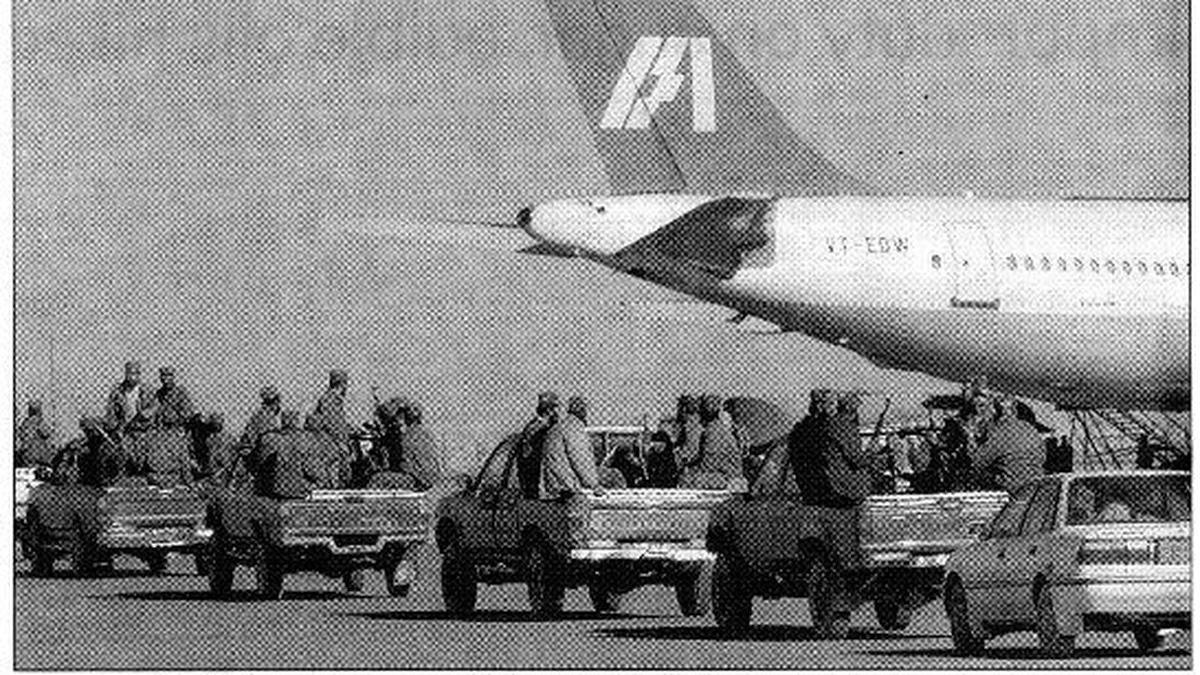From Initial Report to Final Landing: A Retrospective on PTI's Coverage of the IC814 Hijacking in 1999.
On the evening of December 24, 1999, as the sun set on a chilly winter day, an alarming drama was unfolding in the skies above India. Indian Airlines flight IC 814, which had taken off from Kathmandu en route to Delhi, was hijacked by five armed terrorists. This incident would escalate into an eight-day ordeal that captured the attention of the nation and the world. The Press Trust of India (PTI), a major news agency, played a crucial role in disseminating information about the hijacking, providing real-time updates as the situation developed
 Image credit: The Hindu
Image credit: The Hindu
The Initial Report
The first indication of the hijacking came from a PTI reporter who received a tip-off about the unfolding crisis. At precisely 6 p.m., PTI issued a one-line flash, alerting the world to the hijacking. This was a time when social media was virtually non-existent, and live television coverage was still in its infancy. Consequently, news agencies like PTI were the primary sources of breaking news, and their reports were critical in shaping public understanding of the situation
The Sequence of Events
Flight IC 814, an Airbus A300, took off from Tribhuvan International Airport in Kathmandu at 4:25 p.m. but was hijacked just 30 minutes later, around 4:55 p.m., as it began its descent into Lucknow. The hijackers, armed with grenades and pistols, threatened the crew and demanded to be taken to Lahore, Pakistan. However, the aircraft was denied permission to land there, forcing it to circle back into Indian airspace
As the situation escalated, PTI reporters filed a series of updates from various locations, including New Delhi, Kathmandu, Amritsar, Chandigarh, Mumbai, Islamabad, Lahore, London, and Dubai, where the plane would eventually land. The agency's coverage was meticulous, providing minute-by-minute updates that painted a clearer picture of the crisis
The Hijackers' Demands
Throughout the hijacking, the terrorists made several demands, including the release of high-profile militants imprisoned in India. The hijackers executed four passengers during the ordeal, intensifying the urgency of the situation and raising the stakes for the Indian government. The PTI reported these grim developments as they occurred, keeping the public informed about the deteriorating conditions aboard the flight
Government Response
The Indian government, led by then-Prime Minister Atal Bihari Vajpayee, established a Crisis Management Group to handle the situation. This group included key officials from various ministries and was tasked with coordinating the response to the hijacking. PTI's coverage included details of the government's efforts to negotiate with the hijackers, highlighting the complexities and challenges involved in such a high-stakes situation
The Final Resolution
After several days of negotiations, the hijackers agreed to release the remaining hostages in exchange for the release of three militants: Maulana Masood Azhar, Ahmed Omar Saeed Sheikh, and Mushtaq Ahmed Zargar. This controversial decision was met with mixed reactions from the public and political leaders, as many felt that the government had capitulated to terrorism
On December 31, 1999, IC 814 landed at Kandahar Airport in Afghanistan, where the hostages were finally released. PTI's coverage of the final moments of the hijacking was filled with a mix of relief and tension, as the nation awaited news of the passengers' safety
Legacy of the Hijacking
The hijacking of IC 814 remains one of the most significant events in India's aviation history. It highlighted vulnerabilities in air security and prompted changes in policies and protocols to enhance passenger safety. The incident also sparked discussions about the government's approach to terrorism and hostage situations, with many questioning the ethics of negotiating with hijackers
In recent years, the story of IC 814 has been revisited in popular media, including a Netflix docudrama that has reignited public interest in the events of 1999. This renewed attention serves as a reminder of the challenges faced by the Indian government and the media during a time of crisis.



